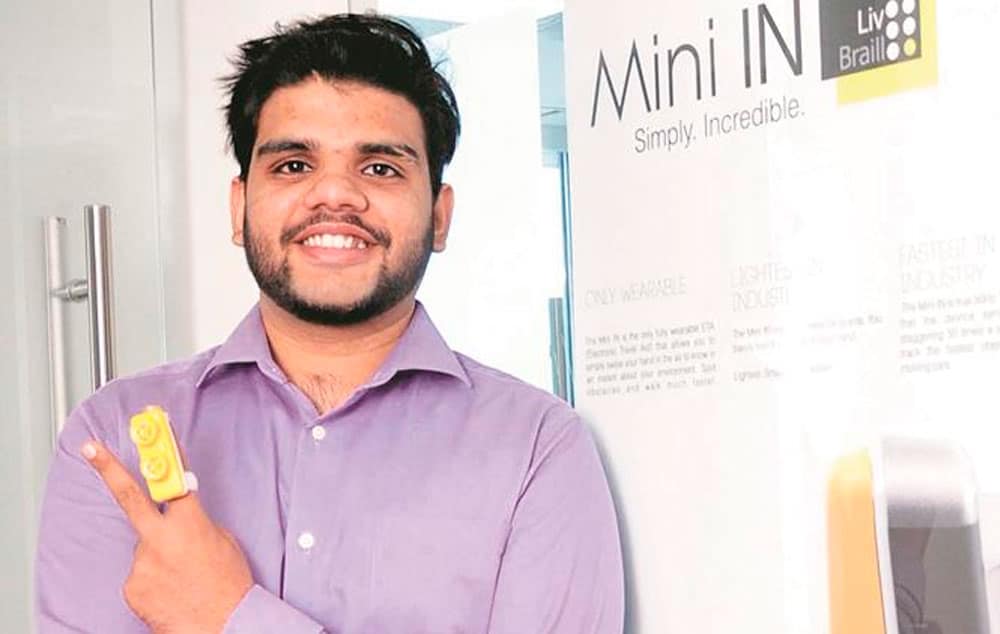3D printing has offered an accessible way for people to innovate and create products for the disabled or impaired. As we’ve seen, the technology has been used time and time again to create custom and functional prosthetics for both people and animals, but it has also been used in other ways, for instance to benefit the visually impaired. From 3D printed tactile music notations, to 3D printed tactile mapping, to 3D touchable paintings, to 3D printed tactile children’s books, many efforts have been made to use the technology to make learning more tactile for the benefit of the visually impaired. Now, Indian startup EmbroS is also making a difference in the visually impaired community with 3D printing through their innovative product, Live Braille, a 3D printed wearable device that effectively replaces the walking cane for the blind.
Founded by Abhinav Verma in 2015, EmbroS is making a name for itself by designing innovative and sleek wearables made specifically for the visually impaired. Their products are made to help the blind navigate their environments without the need of a walking cane, which has been perhaps the most dominant visual aid for a long time. Their first product, the Live Braille Mini, is essentially a tech wearable that can be easily slipped onto the user’s finger. The smart ring, equipped with sensors and advanced haptic technologies, is capable of reading objects in the user’s vicinity (up to a 4.5 meter radius) and provides specific haptic feedback to let the user know if and where there is an obstacle. The ring is even capable of sensing if the obstacle is hard or soft, and whether it is moving or motionless.
The product, which the company claims is the “world’s smallest, lightest travel aid for the blind”, was in such high demand at its release that the first product run had to be 3D printed to keep up with demand. The beauty of the technology, which uses an ultrasonic sensing technology powered at 50Hz and wave tracing and intelligent measurement algorithms, is how quickly visually impaired people can be taught to use it.
Verma explains, “It takes about 30 minutes for a visually impaired person to learn the haptic feedback patterns. A blind person has great perception, that is why it takes very less time to train them. We have partnered with a few national level NGOs in India, so no matter where we ship it, we can provide training to those that need it.”
The Live Braille Mini has been designed with the user in mind with a battery life of about 4 hours, and a 45 minute quick recharge. The device’s body, made from a reportedly bulletproof polycarbonate and medical grade silicon, has also been made to be as study and durable as possible to account for any dropping or accidents. Despite its durability, however, Verma explains that the device is not yet waterproofed as the device itself depends on the passing of sound waves and sealing it could interfere with its effectiveness.
The Live Braille Mini, which is available through EmbroS’ website, is currently retailing for Rs 6999 (approx $105) and has been purchased by over 1000 clients over the last three months. The startup is also currently developing its next products, which will include an iteration of the Live Braille that is capable of storing up to 32GB of audio books and that is equipped with a headphone jack and micro-SD card slot, as well as a braille keyboard, and a Live Braille Pro which will reportedly be launched sometime this year.
The Indian startup is hoping to raise another $2 million in investment funds to further develop their products and to expand their services. Excitingly, the visual aid device company will soon be launching its Live Braille Mini through one of India’s leading e-commerce plaforms Flipkart.
Source: 3ders



